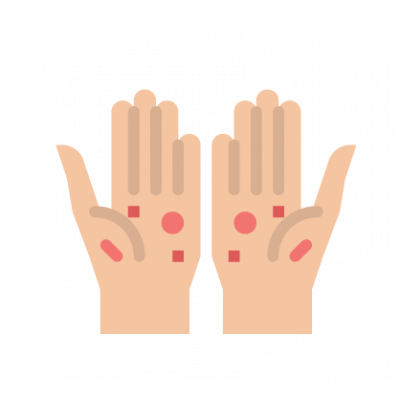Disclaimer & Test Limitation
bebegene® is tested by Eone-Diagnomics Genome Centre (EDGC, a clinical laboratory in South Korea. Recognized for its technology and excellence, the laboratory is certified with both CAP and CLIA accreditation, which includes other line of services such as microarray technology and Direct-to-Consumer genetic testing. EDGC has a quality management system in place to ensure maximum accuracy of screening results. Using technology of Single Nucleotide Polymorphism (SNP) chromosomal microarray, the test has a high resolution detection limit reaching 50kb and is able to detect chromosomal abnormalities as small as 200kb. As with any screening tests, false positive or false negative results cannot be completely eliminated due to various reasons including but not limited to specimen quality and other variables. This is a genetic screening test related to the genetic predisposition developmental disorders. It cannot be considered as a diagnostic test. Hence, the risk of a disorder should never be precluded solely on the basis of screening. If pathogenic variants are detected, follow up testing is recommended to confirm the results. Signs or symptoms observed should be followed up immediately by a professional healthcare provider.
Reference
1) More Attention Needed For ADHD. The Star Online. http://www.thestar.com.my/news/community/2014/03/02/more-attention-needed-for-adhd-lack-of-awareness-facilities-the-bane-of-better-awareness-of-disorder/. Accessed September 8, 2020.
2) Sahril N, Ahmad NA, Idris IB, et al. Mental Health Problems of Children. National Health & Morbidity Survey 2015. 2. Kuala Lumpur: Ministry of Health Malaysia; 2015. p. 190-205.
3) Gomez R, Hafetz N. DSM-IV ADHD: Prevalence based on parent and teacher ratings of Malaysian primary school children. Asian J Psychiatr. 2011;4(1):41-4.
4) Atopic dermatitis/ Eczema. Allergy Centre Malaysia. http://www.allergycentre.com.my/atopic.html. Accessed 8 September 8, 2020.
5) Goh YY, Keshavarzi F, Chew YL. Prevalence of Atopic Dermatitis and Pattern of Drug Therapy in Malaysian Children. Dermatitis. 2018;29(3):151-161.
6) National Health and Morbidity Survey 2011. Healthcare Demand And Out-Of-Pocket Health Expenditure. Volume III.http://iku.moh.gov.my/images/IKU/Document/REPORT/NHMS2011-VolumeIII.pdf. Accessed September 8, 2020.
7) Institute for Public Health (IPH). The Third National Health and Morbidity Survey (NHMS III) 2006, Asthma (Ministry of Health, Malaysia, 2008). http://iku.moh.gov.my/images/IKU/Document/REPORT/2006/ExecutiveSummary.pdf. Accessed February 24, 2021.
8) National ORL Registry – Hearing and Otology Related Disease/Cochlear Implant. The Annual Report National ORL Registry Hearing and Otology Related Disease / Cochlear Implant – Vol. 1 (January 2010- December 2011). Malaysia: Ministry of Health Malaysia; 2013. ISSN 2289-4179.
9) Family Health Division. Ministry of Health. Paper presented at: Prosiding Mesyuarat Membincangkan Hasil Kajian Saringan dan Pengendalian Masalah Autisme. May 16 – 18, 2006; Hotel Dynasty, Kuala Lumpur, Malaysia.
10) Katelaris C, Lai C, Rhee C, et al. Nasal allergies in the Asian-Pacific population: Results from the Allergies in Asia-Pacific Survey. Am J Rhinol Allergy. 2011; 25 (5):3-15. https://pubmed.ncbi.nlm.nih.gov/22185687/. Accessed September 9, 2020.

 中文 (中国)
中文 (中国) Bahasa Melayu
Bahasa Melayu









